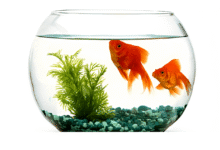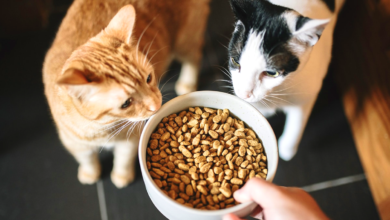
Fruit & Veggies Dogs Can and Can’t Eat
In today’s world, dogs are not just pets; they’re cherished members of our families. As responsible dog owners, we strive to provide them with the best care, including a well-balanced diet. While traditional dog food is a staple, many dog owners wonder about incorporating fruits and vegetables into their furry friend’s diet. Can dogs eat these foods, and if so, which ones are safe? In this comprehensive guide, we’ll explore the world of fruits and vegetables that dogs can and can’t eat.
Read More: Which Fruits Can Dogs Eat?
Fruit & Veggies Dogs Can and Can’t Eat
Dogs have diverse dietary needs, and while meat-based diets are essential, fruits and vegetables can provide a variety of nutrients and health benefits. However, not all fruits and veggies are safe for your furry companion. Let’s delve into the world of dog-friendly produce.
The Benefits of Adding Fruits and Veggies to Your Dog’s Diet

Incorporating fruits and vegetables into your dog’s diet can offer several advantages. These include:
- Nutrient Boost: Many fruits and vegetables are rich in essential vitamins and minerals that can enhance your dog’s overall health.
- Fibre for Digestion: Certain veggies can improve digestion and help with gastrointestinal issues.
- Weight Management: Low-calorie fruits and vegetables can be excellent for dogs trying to shed a few pounds.
- Hydration: Fruits like watermelon can help keep your dog hydrated, especially during hot weather.
Fruits That Are Safe for Dogs
Apples
Apples are an excellent choice for dogs. They are a great source of dietary fibre and vitamin C. Remember to remove the seeds and core, as they contain cyanide, which is harmful to dogs.
Bananas
Bananas are a dog favorite! They are high in potassium, vitamins, and fibre. However, like all treats, feed them in moderation.
Blueberries
Blueberries are packed with antioxidants and can be a tasty and healthy treat for your dog. They are also low in calories, making them an ideal option for overweight dogs.
Fruits That Dogs Should Avoid
Grapes and Raisins
Grapes and raisins can lead to kidney failure in dogs. Even a small amount can be toxic, so it’s best to keep these far away from your furry friend.
Cherries
Cherries, especially the pits and stems, contain cyanide and can be dangerous for dogs. Stick to safer fruits for your pup.
Vegetables That Are Safe for Dogs

Carrots
Carrots are an excellent source of beta-carotene and fibre. They make a crunchy and healthy snack for your dog, promoting dental health as well.
Broccoli
Broccoli is rich in fibre and vitamin C. It can be served steamed or raw, but in moderation, as excessive broccoli can lead to stomach upset.
Cucumbers
Cucumbers are low in calories and high in hydration. They are a refreshing treat for dogs, especially on hot days.
Vegetables That Dogs Should Avoid
Onions and Garlic
Onions and garlic, whether raw, cooked, or powdered, can be toxic to dogs. They can lead to anaemia and other health issues.
Mushrooms
Certain mushrooms are toxic to dogs and can cause severe reactions. Avoid feeding mushrooms to your furry friend.
How to Introduce Fruits and Veggies to Your Dog’s Diet
When introducing new foods to your dog, do so gradually. Start with small portions and monitor for any adverse reactions. Always consult your vet for guidance.
Balancing Your Dog’s Diet with Fruits and Vegetables
While fruits and veggies can be beneficial, they should complement your dog’s regular diet. Balance is key to ensuring your dog gets all the necessary nutrients.
Preparing Fruits and Veggies for Your Dog
Wash and peel fruits and vegetables as needed, and remove any seeds or pits. Cutting them into small, manageable pieces can also prevent choking hazards.
Common Misconceptions About Feeding Fruits and Vegetables to Dogs
There are many myths about what dogs can and can’t eat. It’s essential to separate fact from fiction and rely on expert advice and research.
Signs of Allergies or Digestive Issues
Keep an eye out for any signs of allergies or digestive problems when introducing new foods to your dog. These may include diarrhoea, vomiting, or changes in behaviour.
Consulting Your Veterinarian
Before making significant changes to your dog’s diet, consult your veterinarian. They can provide personalized guidance based on your dog’s specific needs.
Read More: Dogs Eating Grass: Why Do They Do It And Is It Safe?
FAQs (Frequently Asked Questions)
- Can I feed my dog citrus fruits like oranges and lemons? Citrus fruits can be too acidic and may upset your dog’s stomach. It’s best to avoid them.
- Are there any vegetables that can help with my dog’s bad breath? Yes, crunchy vegetables like carrots can help clean your dog’s teeth and improve their breath.
- Can dogs eat fruit peels or skins? It’s generally best to remove peels and skins to avoid any potential digestive issues.
- Is it safe to give my dog fruit as a regular part of their diet? Fruits should be given in moderation as treats or supplements to their regular dog food.
- Are there any fruits or vegetables that can be poisonous to all dogs? While some fruits and vegetables are generally safe, individual dogs may have allergies or sensitivities, so it’s important to watch for adverse reactions.
Conclusion
Incorporating fruits and vegetables into your dog’s diet can be a healthy and enjoyable experience for both you and your furry companion. Just remember to choose the right options, introduce them gradually, and always prioritize your dog’s well-being. Remember, your dog’s health and well-being should always be the top priority. Enjoy exploring the world of dog-friendly fruits and veggies with your furry friend!








One Comment